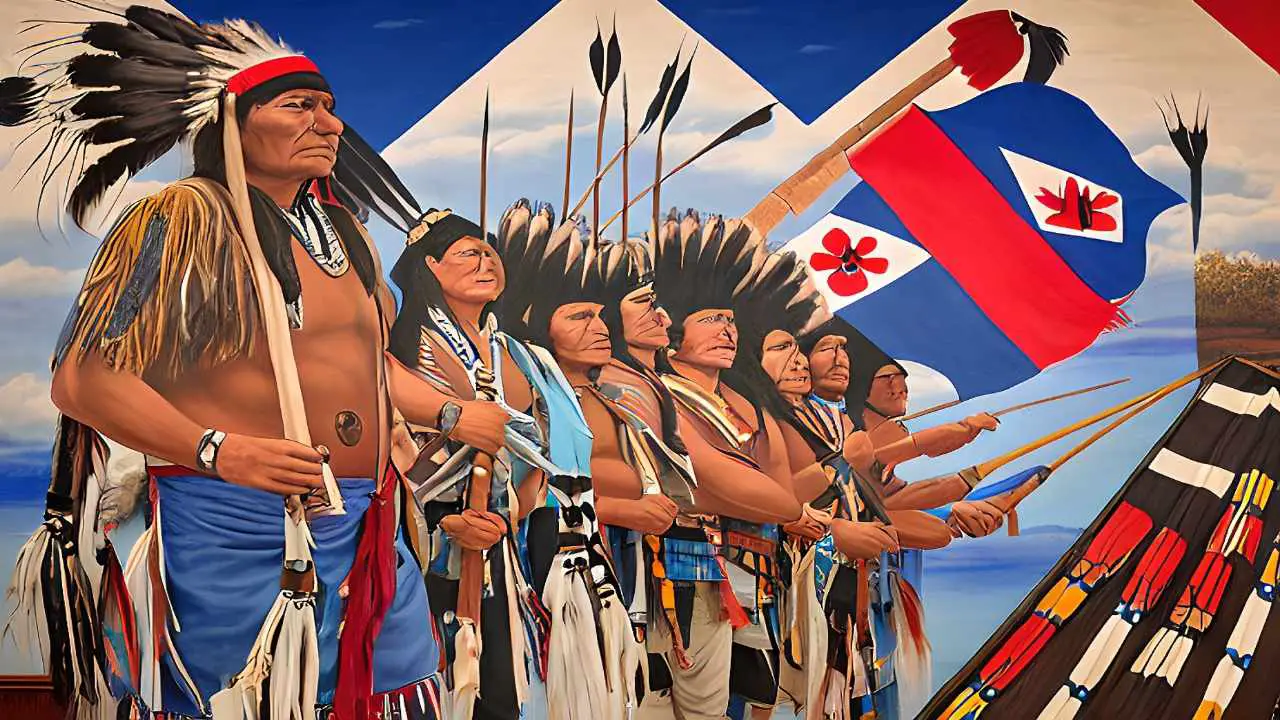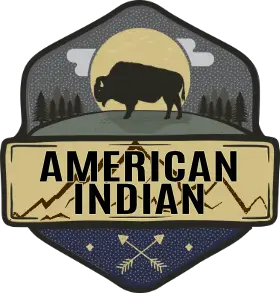Iroquois Nation

The best term to describe the Iroquois people of the United States is a confederacy. This stems from the fact that the Iroquois Indians are a loose gathering of a number of different distinct tribes which came together more as a convenience to combat a common threat and also a means of creating a collaborative force to meet common goals.
It must be said that there were common cultural practices among the different constituents which acted as a unifying force to this rather motley crew. Most scholars define an operational area to which the Iroquois were restricted, and thus formed the plains of the northern United States.
There was a governing league that had a governing council of fifty chieftains, who came from each of the constituent clans of the tribe. The confederacy comprised of the initial groups of five was much later augmented by the addition of the sixth, the Tuscarora tribe.
One of the interesting facts to the Iroquois is the way the name came about after many changes having being done to suit local situations prevalent at the time.
Powerful Reach of the Iroquois
What set apart the Iroquois tribes is the fact that they were politically better organized when compared to the most dominant nations of the times.
There was present a clear command structure which in effect created a multiplier effect when campaigns had to be made. The clear chains of command ensured that the fighting units were provided with the right focus and motivation to produce the best results.
The Iroquois people were the dominant indigenous tribe when the European settlers set foot in the region towards the start of the 1700s. Sensing the power of the tribal collectives, the early foreign colonists were quick to form alliances and partnerships with the major nations of the Iroquois.
This enabled the European settlements to act with the necessary dominance that eventually spaced out the original Iroquois settlements as the dominant power centers.
Quite unlike the other native Indian tribes of the land, it was the strong social skills displayed by the Iroquois that in effect defined the success of the nations to establish strong ties with the settler groups. Thus the native Indian tribes stayed relevant to the political dispensation for some time into the future.
The Battles that Defined the Contours of the Iroquois Nation
Most historians point to the aggressive nature of the native people that inhabited the United States before the coming of the European settlers. The Indian tribes were strong fighters and tacticians who kept up a steady pressure on the neighboring inhabitants to project an air of superiority. The ends of these campaigns of domination were simple, larger space to feed the livestock, fertile lands and access to water transport.
There are some defining campaigns that more or less set the tone for the future development of the Iroquois Indians and they are as listed out in the below.
- Beaver War
Starting out in 1609, the Beaver wars defined the extent of land the Iroquois ended up controlling in Northern America. It thus became easy to hunt game and to engage in the trade of products fashioned from the by-products presented in the hunting expeditions.
As the war came to a close, the Iroquois Indians did control the better parts of the flourishing fur trade in the northern parts of the early United States.
Fur came to dominate the trade lines in ways few people would give credit to. Europe was a steady market for the fur products being handled by the Iroquois nation. This helped establish strong trade links which were out to later use as conduits for arms and ammunition.
One of the strongest influences in the Beaver wars was the role played by certain Jesuit priests who tried to shape the destiny of the Indian people. Some of the key figures were killed in the effort and was duly recognized for their courage by the church.
- The Joint French Campaigns
Often in military campaigns, it is common to follow alliances which would give a boost or thrust to the proceedings. The Iroquois enlisted the services of the French forces to get the better of the Susquehannock parties.
With the assimilation of the vanquished into the body of the Iroquois tribe, there came to be a very dominant controlling force in the central regions of the United States of the 1670s.
In effect, the French alliances were the start of the joint operations that the colonizing European powers had with different indigenous groups of the land.
On the part of the native inhabitants, it became evident that it was possible to assert themselves by having the right alliance to a campaign. But surprisingly there were not two European parties on both the sides of the conflicts.
Since trade played an active role in defining the quality of life of the indigenous people of the land, the wars became focus points that changed the trade patterns of most parts of the lands.
- The American Revolution
The revolution came to define a lot of the changes that came about in the prevalent practices of the indigenous Indian tribes of the time. Although with the Iroquois, they did try to remain neutral in the conflict but had to support the various factions at different points.
What defined the activity of the Iroquois tribes is that the members came in opposition to each other as the separate groupings got to be in the opposing camps.
In a broad sense, the American Revolution divided the Iroquois nation along tribal lines and sowed the early seeds of discord among them. A once proud people were reduced to minions of the major European powers and thus came about the decline of the indigenous people.
After the revolution, the broad tribal groups were driven to the reservations and this lead to their downfall and eventual sidelining from the seats of power.
The Post-War Political Set Up of the Iroquois Tribes
The American Revolution did bring in changes to the lifestyles of the indigenous people like no other even could do before it. There were active attempts to replace the ancient belief systems with the Christian missionary outlook of the new settlers. On the part of the Europeans, there was an increasing effort to reign in the local Indian warlords and chieftains.
Earlier the conflicts used to be to control lines of trade. After the war, the conflict lines were drawn to establish political control over the land which meant restricting the Indian tribes to private reservations. When it came to controlling the indigenous Indian tribes, the European settlers were united in using double speak to meet the ends of the campaigns.
Meaningful Symbols Within The Iroquois Confederacy
Throughout history, many Native American tribes have used symbols to convey important messages and truths. One of these powerful symbols is that of the Iroquois Confederacy, which includes six tribes that have been living together in harmony since the 1400s.
The Iroquois symbol consists of five arrows that are bound together by a single hoop, which is said to represent the unifying strength of the Iroquois tribes. The five arrows represent each of the five original nations that make up the Confederacy – the Mohawk, Oneida, Onondaga, Cayuga, and Seneca.
Each of these nations has its own unique language, culture, and beliefs, yet they are all united by their common goal of living in peace and harmony with each other.
The Iroquois symbol also has a deeper meaning that goes beyond the unity of the five nations. It is said to represent the idea of strength in unity, which is the central philosophy of the Iroquois Confederacy.
The arrows are bound together by the single hoop, which is said to represent the peace and harmony that the Confederacy seeks to achieve. The arrows themselves represent the five nations of the confederacy and their ability to stand together and fight for a common cause.
The Iroquois symbol is still used today by many Native American tribes to represent the importance of strength in unity, and to remind us of the powerful bond that exists between the five nations of the Iroquois Confederacy.
The symbol serves as a reminder of the importance of respecting each other’s unique cultures, languages, and beliefs, while also recognizing that we are all connected as part of a larger whole.
The Religious Mooring of the Iroquois People
It would be wrong to consider that the native Iroquois had any sort of religious gods. Theirs was more of a brotherhood movement that gave respect to each other. This is also the prime reason that the settlers were able to exert a huge influence on the groups as there were no strong orientations in any direction.
The best term to use in describing the Iroquois people when it came to matters of spirituality is that of a ragtag band of warriors. Unlike the more dominant Indian groups who were controlled by a chieftain and even a medicine man, the Iroquois never had a central controlling figure of sorts. This could have been the single contributing factor to their break up as well.
Weapons and Tools of Choice of the Iroquois Tribes
The first excavations around the reservations of the Iroquois pointed to the prevalence of metal tools to till the soil and as arrowheads on the battlefield.
There were instances of very primitive forms of irrigation canals that sought to strengthen the agrarian nature of the settlements. Hide, and leather were common by-products of hunting expeditions and provided a variety to the attire of the tribesmen.
A strong presence of deer antlers as knife handles and as arrowheads; point to the predominance of the game in an around the locations of the Iroquois. Stone implements were in everyday use, and there were a wide variety of weapons and tools made of stone pieces. Equally prevalent were shell pieces which formed the cutting edges to wooden knives and blades.
The Present State of the Iroquois Nation
Finding a strict form of the Iroquois would be tough. This has been brought about by the intermingling of the members of the nations and an essential feature of the diminishing numbers of each tribes group.
As a direct result, there is not much of a presence of the true Iroquois nations at present and what is popularly touted as being native to the Iroquois is but a hybrid version.




